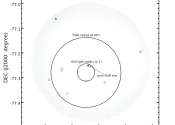First tidally locked super-Earth exoplanet confirmed
An international team of astronomers and astrophysicists has confirmed the first known observance of a tidally locked super-Earth exoplanet. In their paper published in The Astrophysical Journal, the group describes the unique ...









